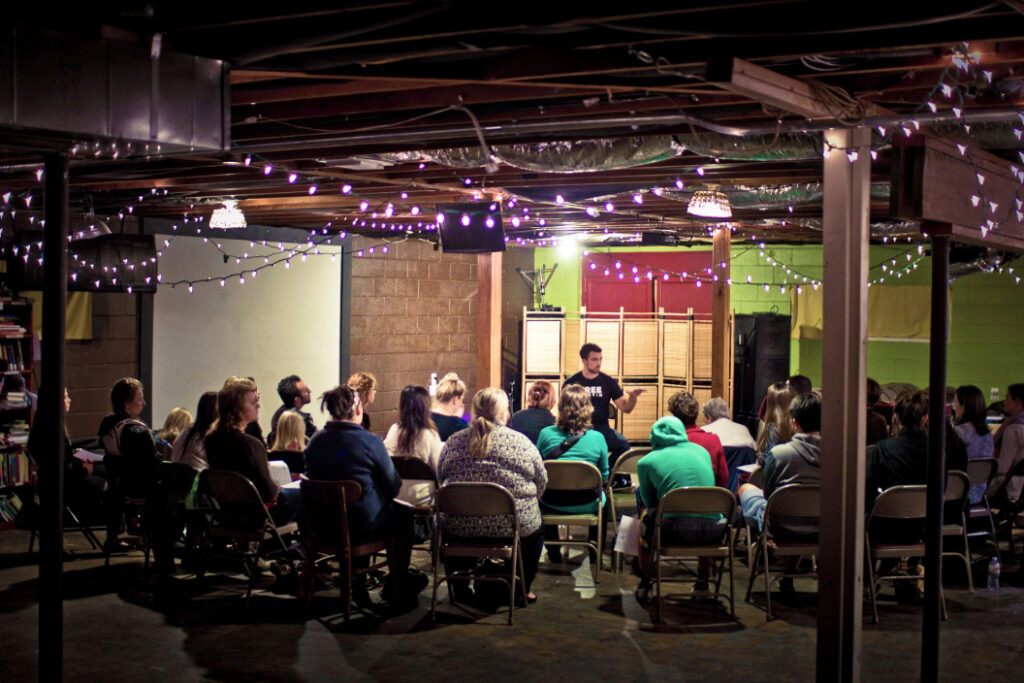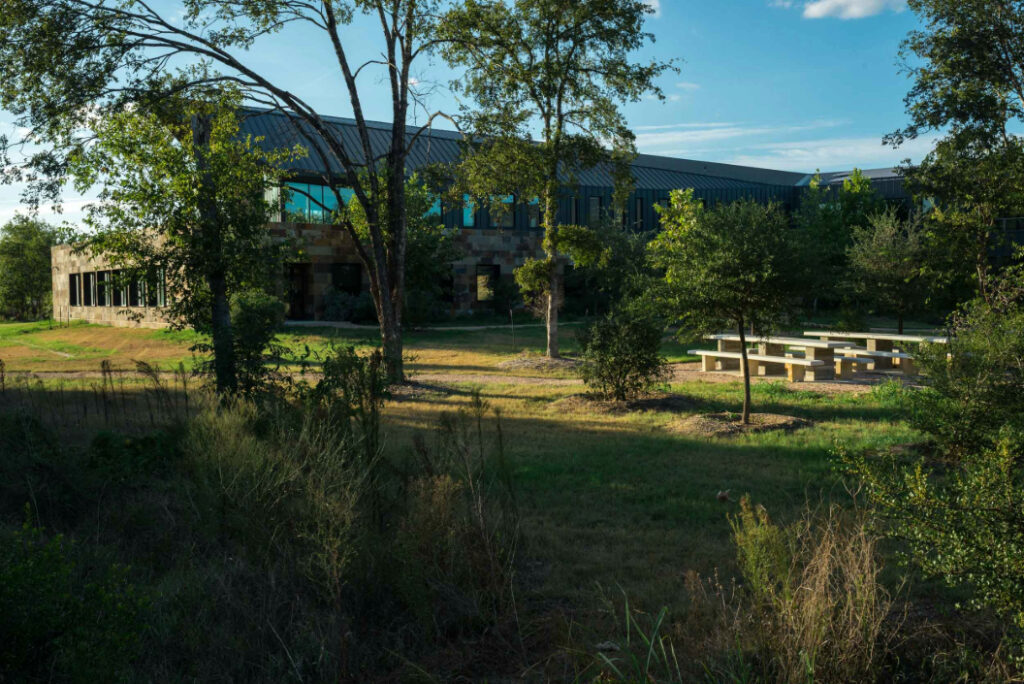Allies Against Slavery is setting a new standard for how data interacts with sex trafficking.

By Hannah Nunez. Photos courtesy of Allies Against Slavery
When presented with the term “human trafficking” oftentimes popular action movies like Taken come to mind. But that connection couldn’t be further from what trafficking has evolved into. These films often neglect to mention organizations and people, like those who are part of Allies Against Slavery (AAS), who are fighting every day to eradicate trafficking for good.
Allies Against Slavery is an organization that uses software data to both prevent human trafficking and reinvent the idea of what it can look like in a modern-day environment. Gathering since 2010 and officially established as a nonprofit in 2014, the organization is determined to provide more factual information on the world of modern-day slavery through their Lighthouse tool. While the group is officially classified as a nonprofit, their blend of technology and community creates a much more complex team than what meets the eye. “Our goal is that every community has the data it needs to combat human trafficking,” says Chief Product Officer Becky Austen. “The heart of what we do is around tech and data. But we are mission driven. Technology is a part of what we do to enable our mission in order to succeed.”
Allies began simply in 2010 as a group of community advocates who recognized sex trafficking’s prevalence in Austin and determined to make a change. Acting as a spearhead of the grassroots movement, Founder and CEO John Nehme began to question just how much of a difference their work made. This pivotal question motivated the team to transition into a registered nonprofit in 2014. Through a partnership with The Central Texas Coalition of Human Trafficking, the organization connected with researchers at UT Austin where they then conducted a prevalence study. The study, “Human Trafficking by the Numbers: The Initial Benchmark of Prevalence and Economic Impact for Texas,” tracked whom human trafficking affects in Texas and how often. The results illuminated a whopping 79,000 estimated victims of domestic minor sex trafficking.
This new data was very disturbing for the teams. But Nehme’s concern laid in the fact that while thousands of victims were suffering, the community was just now becoming aware of their existence. The prevalence study instilled Allies Against Slavery’s core mission to use data as a way to bring awareness to and combat human trafficking.
“As a group, we now have an understanding of what human trafficking looks like, where it’s happening and how we can best respond, ensuring that no one is going unseen in this system,” says Director of People and Policy Torey Tipton. The determination behind their values has only strengthened as time has passed, and one can tangibly recognize their values through their groundbreaking software.
Similar to the organization’s history, their screening software has faced many changes as time has passed in order to properly meet the community’s needs. “In the beginning, we looked for others to build off and potentially enhance what had already [existed]. But we soon realized no one was doing this type of work,” says Austen. “The notion of actually aggregating data and using it to inform decision making [regarding human trafficking]was somewhat novel. So why not be the ones to lead this?”
The original tool, known as Tier One, acted as a way for service providers to have a better understanding of their clientele and their safety. “It included a series of indicators and risk factors associated with trafficking. If a practitioner observed those certain indicators within an individual, they would check the boxes. The more indicators, the higher the likelihood that the individual was a victim of exploitation,” explains Austen.

After receiving a grant in 2019 from the Child Sex Trafficking Team in the Governor’s Office of Texas, AAS had the opportunity to elevate their tool and create the first edition of Lighthouse. Transitioning from a “paper tool” to a digital software allowed the nonprofit to adopt the Commercial Sexual Exploitation Identification Tool, providing a much more universal lens to their original screening. At this time, AAS decided to partner with AnnieCannons to perfect Lighthouse’s coding, as well as represent the organization’s mission from the inside out.
AnnieCannons is a nonprofit that trains human trafficking victims on how to code and properly reacclimate to a professional workforce. Partnering with the organization inspired AAS to take their software a level further and integrate even more data sources, in order to solidify their growing hub of information. “Everything from service providers to law enforcement to The National Human Trafficking Hotline,” says Austen. “By collecting all these data sources from different lenses, Lighthouse will be more useful than ever before.”
What We Know About Modern-Day Slavery
While the work being done at Allies Against Slavery centers prevention, their data also spreads awareness on what human trafficking realistically looks like in a modern-day city. “The majority stand by one of two preconceived notions. Human trafficking is a physical bondage that involves people being chained up and locked away. Or it simply just doesn’t happen here,” says Senior Director of Operations Grace Dai. “We often hear things like, ‘That’s happening in foreign countries or closer to the border, but not here in Central Texas.’ That couldn’t be more wrong.”
With such a dated perception of modern-day slavery, many overlook and invalidate an alarming number of victims. “The idea of chains and shackles is very misconstruing to what human trafficking is visually,” says scholar-in-residence Vanessa Bouché. “It’s much more of a mind control than it is a physical control. People are not stuck in physical bondage. They’re stuck in psychological bondage.”
One can break down the definition of human trafficking into three segments. The acts that take place, the means by which they take place and the purpose, all under force, fraud and coercion. While trafficking can truly happen to anyone, minority groups and underage individuals are more likely to be at risk.

“Oftentimes, these are kids and young adults who no one’s looking for, such as kids in foster care or not in school. Traffickers are smart; it’s a business for them,” says Tipton. “They’re always going to go after the least risky option for themselves. It’s not as black-and-white as many people perceive. Oftentimes, a victim’s experience is that they meet someone who’s kind to them when no one has been kind to them in a while. A trafficker will treat them very well and work to get their basic needs met as a way to gain trust and have victims become more and more dependent.”
According to Bouché, the seemingly harmless misconception can quickly result in victims being trapped in a system they were forced into. “We still have people using the term ‘child prostitute,’ which legally speaking does not exist. When asking adult women who engage in commercial sex acts when they started, the response is typically when they were underage. They start as a victim. Yet as soon as they turn 18, they begin to be treated as a criminal. These are things the public doesn’t really understand, and it’s becoming harmful.”
The the dated perception we have about human trafficking no longer fits within the circumstances of our environment. Traffickers have ridden alongside Austin’s evolution in order to hide in plain sight. But so much of the population has yet to catch up. By becoming familiar with proper perceptions and jargon, we educate ourselves as well as respect victims’ experiences.
What began as a simple in-hand screening tool has become a statewide integrated software that is spreading quickly to other areas of the United States. For example, Allies Against Slavery has been providing their work to Louisiana for three years. Just recently, AAS created a partnership to implement their software in Florida. By displaying constant evolution, the organization is only further proving how their work is solely community based. “We use the people to guide what we do. What they deem as needing attention is where we focus,” says Tipton. “The overall end goal is to have Austin be a slave-free city. We’re working toward that by continuously striving to be better.”

